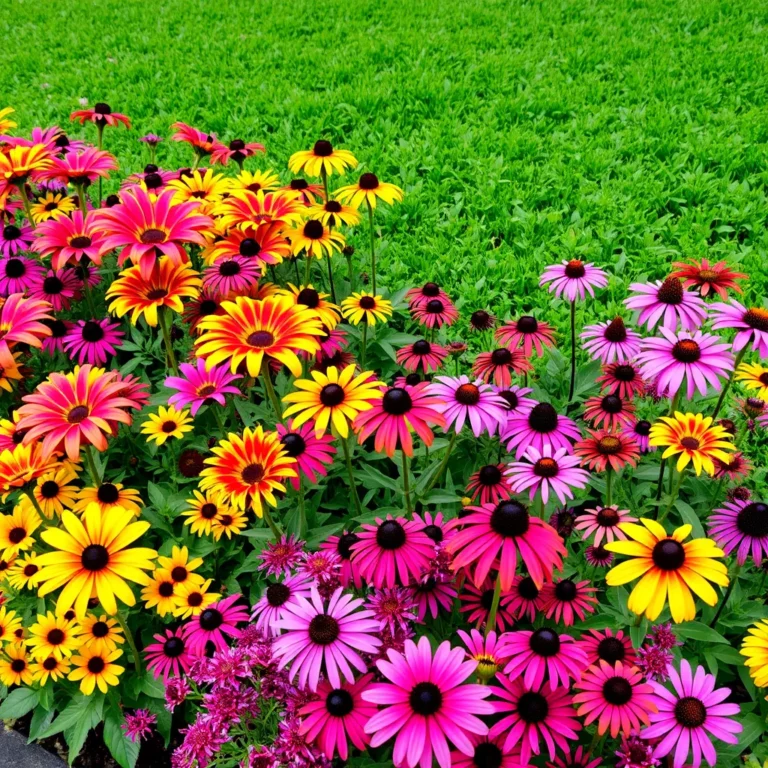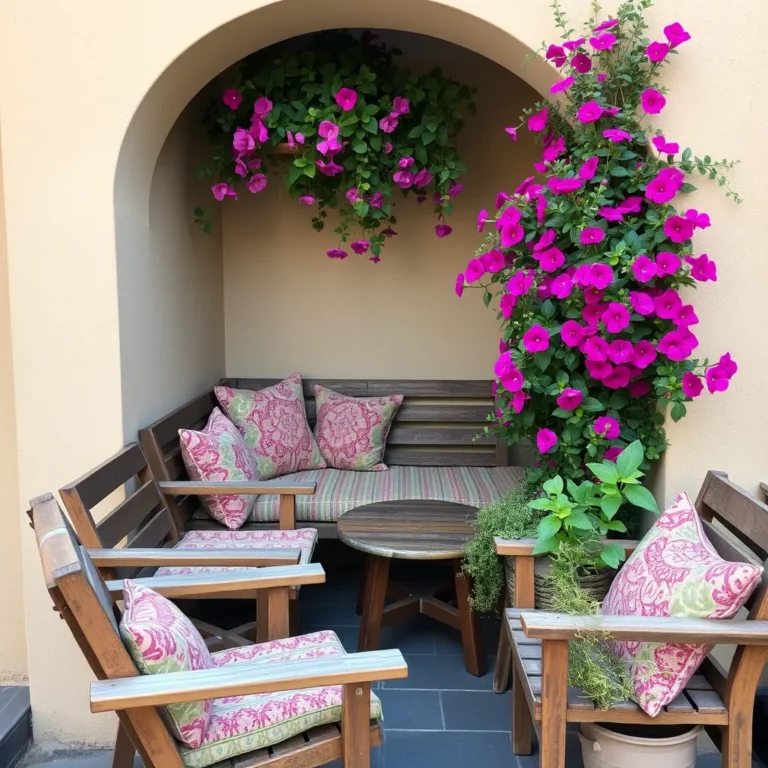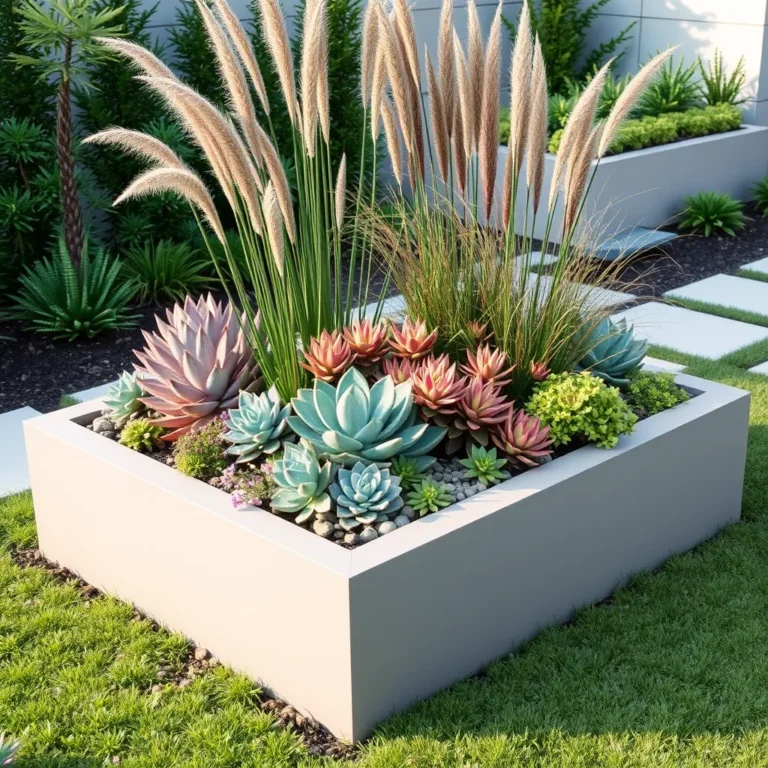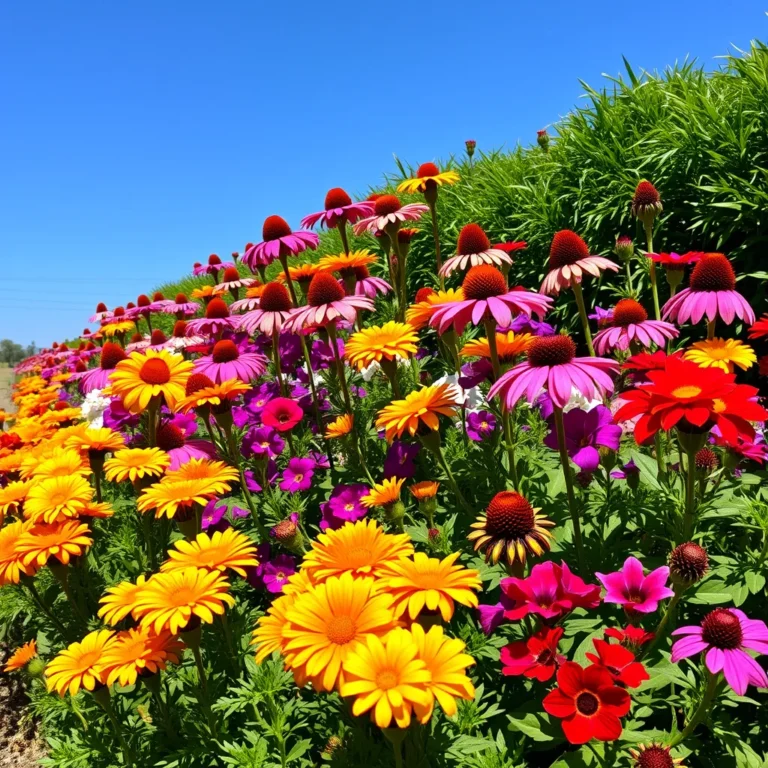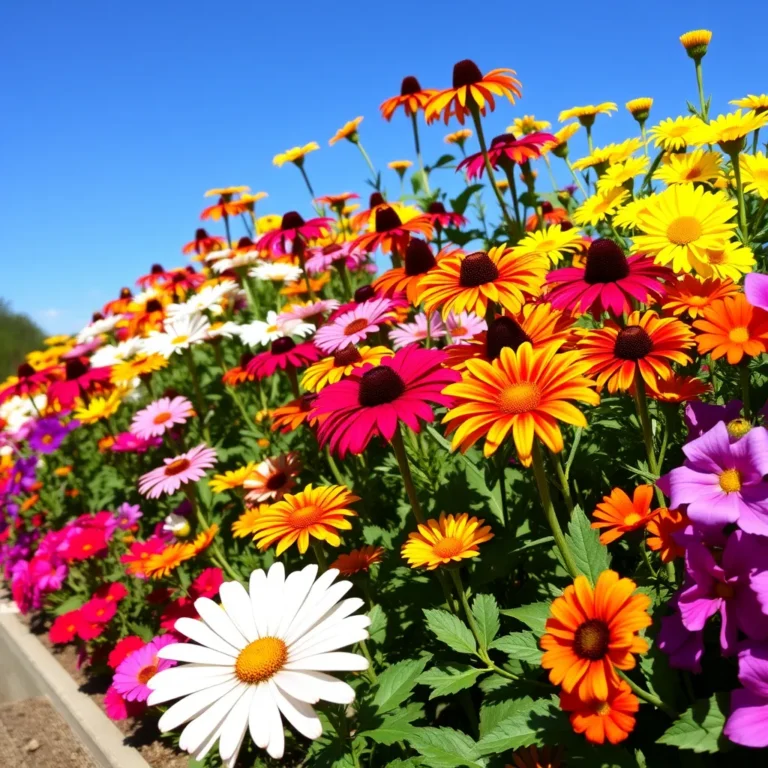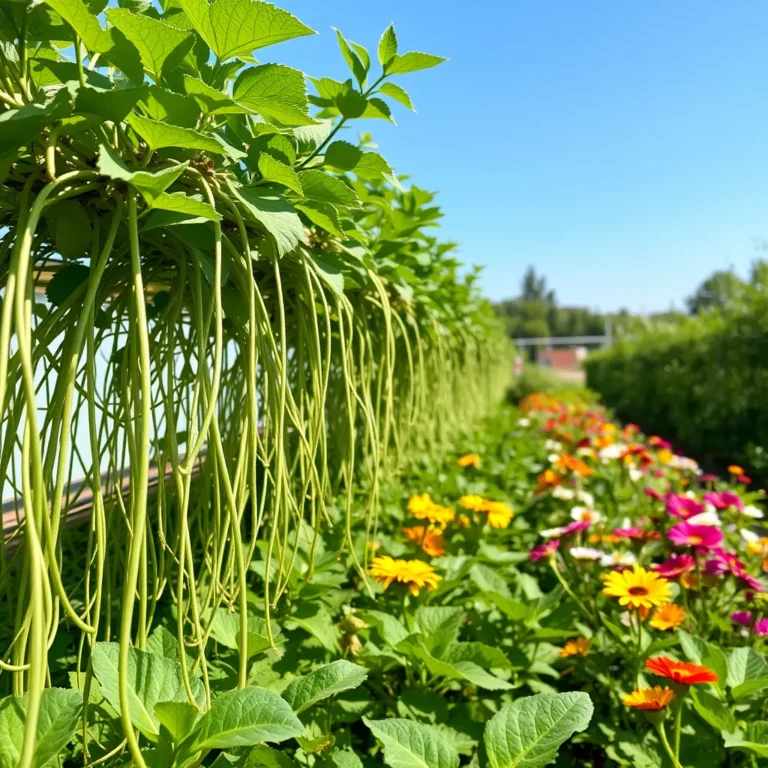10 Essential Tips for Designing a Classic Garden
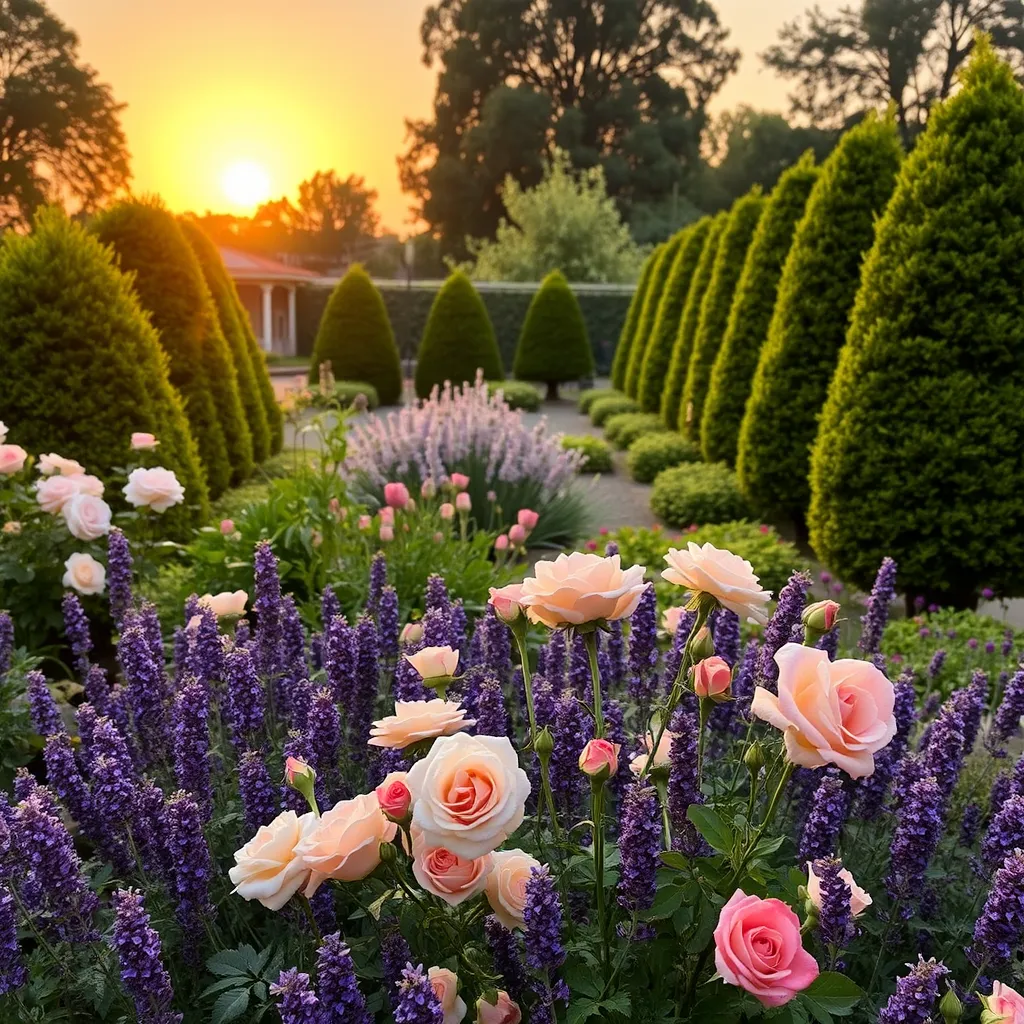
Creating a classic English country garden is a rewarding project that can beautify your home. With a few simple tips, you can cultivate a space that reflects timeless charm and natural elegance. From choosing authentic plants to designing pathways with natural materials, I’ll guide you through essential steps for a stunning garden. Let’s explore how to create a vibrant, welcoming landscape, perfect for relaxing or entertaining. Dive in for your garden transformation!
Choose Classic Plant Varieties for Authenticity

Select classic plant types for your garden. Some great choices include roses, boxwoods, and lavender. These plants give your garden a true English feel. They have stood the test of time and offer beauty.
When picking plants, think about their shapes and colors. Use flowers that bloom at different times. This keeps your garden lively. You can mix in some herbs too. Herbs like thyme and sage add charm and flavor.
Planting native species is wise. They thrive in your area and need less care. This choice supports local wildlife and adds authenticity.
Incorporate Perennials for Year-Round Beauty

Perennials are key for lasting beauty. Unlike annuals, they come back each year. They save you time and money in the long run. Choose perennials that fit your climate.
Some favorites include peonies, daylilies, and hostas. These plants bloom in various seasons, bringing color year-round. Group perennials in clusters for a striking look. This creates a soft, flowing feel in your garden.
Don’t forget to space them well. Proper spacing allows air to flow. This helps keep plants healthy and reduces pests.
Create a Central Focal Point with Garden Structures

A focal point grabs attention. It can be a bench, fountain, or a gazebo. These structures add charm and give you a spot to relax.
Think about the style of your focal point. It should match your garden’s theme. A rustic wooden bench fits well in a classic garden. A stone fountain adds elegance and sound.
Make sure your focal point is visible from different angles. It should draw the eye as you walk through your garden. Surround it with colorful flowers to enhance its beauty.
Design Walkways with Natural Materials

You should use stones, brick, or gravel for your paths. These materials blend well with nature. They can help your garden feel more inviting. Natural walkways add charm and warmth. You can choose shapes that suit your style. Curved paths look soft and friendly. Straight paths give a classic touch.
Think about the width of your walkways. A wider path can let two people walk side by side. This makes your garden feel open. Add small plants along the edges for a cozy feel.
Utilize Raised Beds for Structure and Accessibility

Raised beds are great for many reasons. They help with drainage and soil quality. You can grow plants at a comfortable height. This makes gardening easier on your back.
You can also fill raised beds with rich soil. This helps plants grow better. Arrange your beds in a way that suits your garden layout. Space them well for easy access.
Consider using wood, stone, or bricks for your beds. This adds structure and beauty. You can paint or stain wood for a fun pop of color.
Implement a Color Palette Inspired by Nature

Choose colors that you see in nature. Soft greens, bright yellows, and deep blues work well. These colors create a calm and peaceful atmosphere.
Plant flowers in groups for more impact. Mix different shades of the same color for depth. You can also use foliage to add texture.
Think about how colors change with the seasons. Some flowers bloom in spring, while others shine in summer. Plan your garden to keep it colorful all year long.
Encourage Wildflowers for a Natural Look

Wildflowers bring life to your garden. They bloom in bright colors and attract bees. Start by selecting local wildflower seeds. Native plants grow well in your area. Scatter seeds in open spots. This will create a lively feel. Let nature do its work.
Wildflowers are low maintenance and easy to grow. They need little care once planted. Their roots help hold soil in place. This prevents erosion and keeps your garden healthy. You can enjoy their beauty with minimal effort.
Mix different types for variety. Include daisies, poppies, and cornflowers. Each flower adds a unique touch. You will see butterflies and birds visiting. This adds to the charm of your garden.
Incorporate Traditional Garden Features (e.g., benches, trellises)

Adding classic features makes your garden inviting. Benches offer a spot to relax and enjoy nature. Choose wooden benches for a rustic look. Place them under trees or near flower beds.
Trellises are great for climbing plants. They add height and interest to your garden. You can grow roses or sweet peas on them. Position trellises near pathways for a charming view.
Consider adding a gazebo or arched bridge. These features create focal points. They invite people to explore and enjoy your space.
Plan for Seasonal Changes with Planting Schedules

Planning your garden for all seasons ensures beauty year-round. Start by making a list of flowers that bloom at different times. Spring bulbs like tulips and daffodils wake up your garden. Plant them in the fall for a colorful spring.
Summer flowers like sunflowers and zinnias add warmth. Fall brings rich colors with asters and chrysanthemums. Winter can shine too. Use evergreens to keep your garden lively.
Create a planting calendar. Mark when to sow seeds and when to expect blooms. This helps you enjoy your garden through every season. You will appreciate the changes nature brings.
Maintain Garden Aesthetics with Regular Pruning

Regular pruning keeps plants healthy and neat. It helps shape plants and removes dead parts. You can start in early spring or late fall. Focus on roses, shrubs, and trees first. This keeps your garden looking fresh.
Pruning also boosts new growth. It lets in light and air, which are vital. When you prune, use sharp tools. Clean cuts heal faster and reduce disease risks. Always wear gloves for safety.
Aim to prune about one-third of the plant. This keeps it lively and strong. Check each plant’s needs. Some like a light trim, while others need more.
Use Mulching Techniques to Retain Soil Moisture

Mulching is a smart way to keep soil moist. It reduces weeds and adds nutrients. You can use organic materials like bark or straw. Spread a layer about two to three inches deep.
This layer helps soil stay cool in summer. It also warms soil in spring. Both help plants grow better. Mulch breaks down over time, feeding the soil.
Check the mulch often. Add more if it looks thin. This keeps your garden looking tidy and healthy.
Explore Companion Planting for Healthier Gardens

Companion planting groups plants that help each other. Some plants keep pests away, while others boost growth. For example, plant tomatoes with basil. Basil makes tomatoes taste better and wards off bugs.
You can also plant marigolds with veggies. They attract helpful insects and repel harmful ones. This method saves time and reduces chemical use.
Plan your garden layout to include these pairs. It makes your garden more vibrant and fruitful. Always research which plants work best together. This will lead to a thriving garden.
Conclusion
In this article, I discussed how to create a beautiful garden. Start with classic plant varieties for authenticity. Use perennials to ensure beauty year-round. Incorporate structures for a strong focal point. Design walkways with natural materials, and consider raised beds for easy access.
Also, choose a color palette inspired by nature. Encourage wildflowers for a natural feel and include traditional features like benches. Plan your planting for seasonal changes. Finally, maintain your garden with pruning, mulching, and companion planting.
A well-designed garden can bring joy and beauty to your space.

